Explore the 10 Most Sacred Place around the World
Cenote Sagrado, Mexico
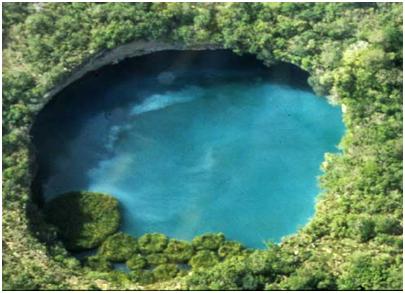 The pre-Columbian Maya archaeological site of Chichen Itza in the northern Yucatan Peninsula, Cenote Sagrado is one of the most visited archeological sites in Mexico and most sacred place in the world. An alternatively known as the "Well of Sacrifice", Cenote Sagrado is ancient Maya revered water for its life-sustaining power and worshiped Chac; the Mayan rain God. The Maya believed that some of these sites were visited by Chac himself. Designated as "sacred" and reserved for rituals, offerings and sacrifices. One of the most notable sacred springs is created from a natural limestone cave, with steep sides stretching about 60 feet above the water line.
The pre-Columbian Maya archaeological site of Chichen Itza in the northern Yucatan Peninsula, Cenote Sagrado is one of the most visited archeological sites in Mexico and most sacred place in the world. An alternatively known as the "Well of Sacrifice", Cenote Sagrado is ancient Maya revered water for its life-sustaining power and worshiped Chac; the Mayan rain God. The Maya believed that some of these sites were visited by Chac himself. Designated as "sacred" and reserved for rituals, offerings and sacrifices. One of the most notable sacred springs is created from a natural limestone cave, with steep sides stretching about 60 feet above the water line.
Visited by countless number of People, the sacred place is almost perfectly circular; the cenote is more than 50 meters in diameter, almost 20 meters upper rim, approximately water is 15 meters deep with a thick layer of muck at the bottom.
Mount Kailash, Tibet
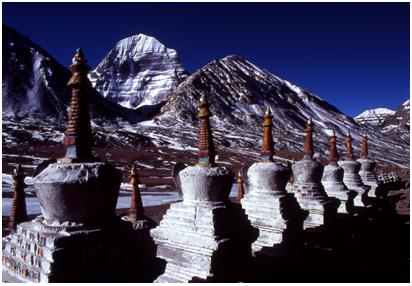 Known as the greatest mystical library in the world, the religious place for Hindi, Buddhist, Jain and Bon faiths, Mt. Kailash has an exclusive distinction of being the world's most venerated holy place. The great mass of black rock soaring to over 22,000 feet, the supremely sacred site of billions of people, Kailash lies in the far mountain's location in western Tibet.
Known as the greatest mystical library in the world, the religious place for Hindi, Buddhist, Jain and Bon faiths, Mt. Kailash has an exclusive distinction of being the world's most venerated holy place. The great mass of black rock soaring to over 22,000 feet, the supremely sacred site of billions of people, Kailash lies in the far mountain's location in western Tibet.
The snow-capped peaks are believed to be one of the holiest places for Hindu as it's the abode of Lord Shiva. Kailash is sacred to other religions as well. The Jains call the mountain Astapada and believe it to be the place where Rishaba, the first of the twenty-four Tirthankaras attained liberation. Bon, Tibet's pre-Buddhist calls the mountain Tise and believes it to be the seat of the Sky Goddess Sipaimen. Mount Kailash offer no planes, trains or buses and often tend to be hazardous travel due to the cold weather, however, an untouched holy ground is visited by thousand pilgrims each year and the holy mountain on foot in a ritual that is believed to bring good fortune.
Vortexes, Arizona
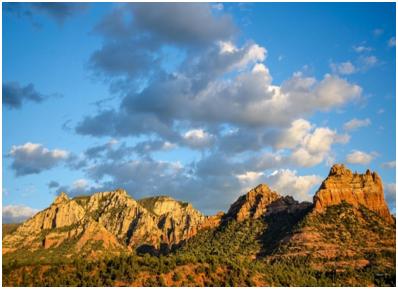 Located in the Verde Valley of northern Arizona, the city of Sedona Vortexes is renowned for the stunning long beauty four vortex points of red sandstone formations contain mystical and healing powers. Found in 1950s, the Sedona's vortexes is placed in hypothetical alignments called "ley lines" intersect with one another and it's believed to be one of the most supernatural supremacy county.
Located in the Verde Valley of northern Arizona, the city of Sedona Vortexes is renowned for the stunning long beauty four vortex points of red sandstone formations contain mystical and healing powers. Found in 1950s, the Sedona's vortexes is placed in hypothetical alignments called "ley lines" intersect with one another and it's believed to be one of the most supernatural supremacy county.
Created not by wind or water, but from spiraling spiritual energy, the vortexes of Sedona has numerous paintings and little altar of an ancient Native American tribe called The Yavapai. Honor with great energy that facilitate prayer, mediation and healing Vortexes of Arizona is famous gathering place for New Agers spirituality. Some say that all vortexes are equal in their ability to amplify energies where some says it differs however; the energy of the vortexes interacts with a person's inner self.
Pashupathinath Temple, Nepal
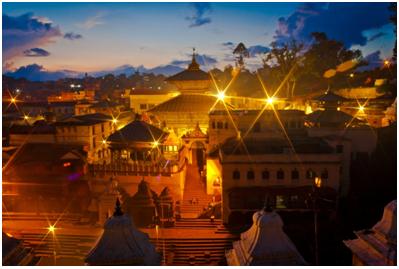 Characteristic of Nepalese style pagoda, Pashupathinath Temple's architecture is an extensive multifaceted consisting of many other old and important temples and statues. A UNESCO World Heritage Sites also renowned as one of the world top sacred places, Pashupathinath Temple is located on the Banks of the Baghmati River in the northeast of Kathmandu Valley.
Characteristic of Nepalese style pagoda, Pashupathinath Temple's architecture is an extensive multifaceted consisting of many other old and important temples and statues. A UNESCO World Heritage Sites also renowned as one of the world top sacred places, Pashupathinath Temple is located on the Banks of the Baghmati River in the northeast of Kathmandu Valley.
Nepal's holiest temple for Hindu religion followers, the temple is prominent Hindu cremation site. Legends says that, targeted by thousands and thousands of pilgrims each day, the world greatest Shiva site, Pashupathinath Temple is believed to be the holiest place for Lord Shiva as its maleness organ fell in the locale. The main temple of Pashupathinath contains a lingam of Pashupati which is three and a half feet high and has four faces sculptured on it.
Glastonbury Tor, England
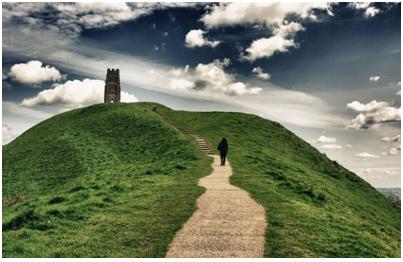 The Summerland Meadows, which is a part of the Somerset Levels rising to an elevation of 158 metres, Glastonbury Tor in England is one of the world most sacred and mysterious place that exert a magnetic attraction upon both my mind and heart. According to the legends, filled with images of dragons, fairy kingdoms and Arthurian folklore, the mysterious sacred ground is home to the Gwyn ap Nudd; the Celtic King of the Fairies. The hill is also believed to be Avalon where the coffins of King Arthur and Queen Guinevere were evidently found.
The Summerland Meadows, which is a part of the Somerset Levels rising to an elevation of 158 metres, Glastonbury Tor in England is one of the world most sacred and mysterious place that exert a magnetic attraction upon both my mind and heart. According to the legends, filled with images of dragons, fairy kingdoms and Arthurian folklore, the mysterious sacred ground is home to the Gwyn ap Nudd; the Celtic King of the Fairies. The hill is also believed to be Avalon where the coffins of King Arthur and Queen Guinevere were evidently found.
On the other side, another legend states that Glastonbury Tor is the site of the Holy Grail. No matter the myth, the incline of the hill are terraced but the method by which they were formed remains unexplained. Artifacts from human visitation believed that the sacred pace is dating from the Iron Age to Roman eras and has been proven to release positive energy to visitors who walk through the hills.
Visited by countless number of People, the sacred place is almost perfectly circular; the cenote is more than 50 meters in diameter, almost 20 meters upper rim, approximately water is 15 meters deep with a thick layer of muck at the bottom.
Mount Kailash, Tibet
The snow-capped peaks are believed to be one of the holiest places for Hindu as it's the abode of Lord Shiva. Kailash is sacred to other religions as well. The Jains call the mountain Astapada and believe it to be the place where Rishaba, the first of the twenty-four Tirthankaras attained liberation. Bon, Tibet's pre-Buddhist calls the mountain Tise and believes it to be the seat of the Sky Goddess Sipaimen. Mount Kailash offer no planes, trains or buses and often tend to be hazardous travel due to the cold weather, however, an untouched holy ground is visited by thousand pilgrims each year and the holy mountain on foot in a ritual that is believed to bring good fortune.
Vortexes, Arizona
Created not by wind or water, but from spiraling spiritual energy, the vortexes of Sedona has numerous paintings and little altar of an ancient Native American tribe called The Yavapai. Honor with great energy that facilitate prayer, mediation and healing Vortexes of Arizona is famous gathering place for New Agers spirituality. Some say that all vortexes are equal in their ability to amplify energies where some says it differs however; the energy of the vortexes interacts with a person's inner self.
Pashupathinath Temple, Nepal
Nepal's holiest temple for Hindu religion followers, the temple is prominent Hindu cremation site. Legends says that, targeted by thousands and thousands of pilgrims each day, the world greatest Shiva site, Pashupathinath Temple is believed to be the holiest place for Lord Shiva as its maleness organ fell in the locale. The main temple of Pashupathinath contains a lingam of Pashupati which is three and a half feet high and has four faces sculptured on it.
Glastonbury Tor, England
On the other side, another legend states that Glastonbury Tor is the site of the Holy Grail. No matter the myth, the incline of the hill are terraced but the method by which they were formed remains unexplained. Artifacts from human visitation believed that the sacred pace is dating from the Iron Age to Roman eras and has been proven to release positive energy to visitors who walk through the hills.